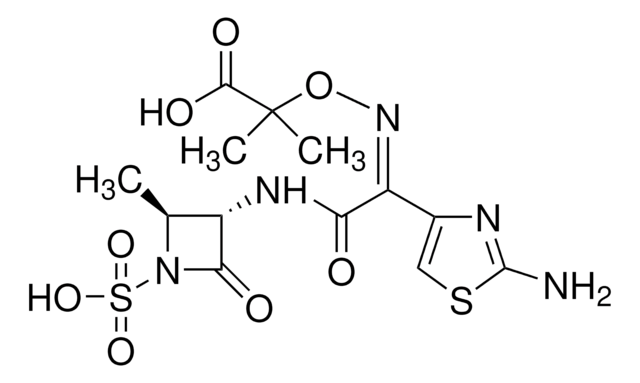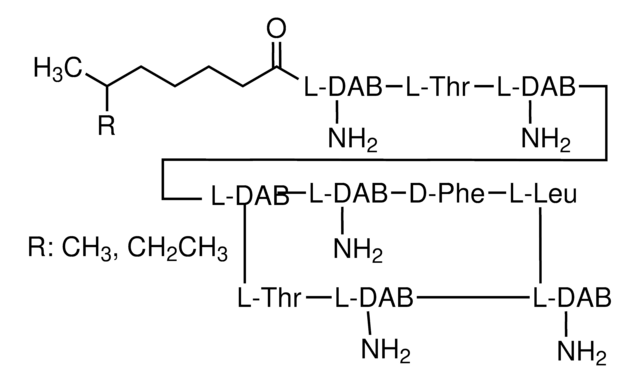B0184
Bacteriorhodopsin from Halobacterium salinarum
native sequence, lyophilized powder
Synonim(y):
BR from H. salinarum, Bacterioopsin, Bacteriorhodopsin from Halobacterium halobium
About This Item
Polecane produkty
pochodzenie biologiczne
Halobacterium salinarium
Postać
lyophilized powder
metody
ligand binding assay: suitable
mass spectrometry (MS): suitable
numer dostępu UniProt
temp. przechowywania
2-8°C
informacje o genach
Halobacterium salinarium ... OE_RS05715(5953595) , VNG_RS05715(144807)
Szukasz podobnych produktów? Odwiedź Przewodnik dotyczący porównywania produktów
Opis ogólny
Zastosowanie
- in generation of droplet lipid bilayer
- as a standard in quadrupole time-of-flight (QTOF) mass spectroscopy (MS)
- in the generation of protein-detergent complex and micelles for dynamic light scattering studies
Działania biochem./fizjol.
Uwaga dotycząca przygotowania
Kod klasy składowania
11 - Combustible Solids
Klasa zagrożenia wodnego (WGK)
WGK 3
Temperatura zapłonu (°F)
Not applicable
Temperatura zapłonu (°C)
Not applicable
Środki ochrony indywidualnej
Eyeshields, Gloves, type N95 (US)
Certyfikaty analizy (CoA)
Poszukaj Certyfikaty analizy (CoA), wpisując numer partii/serii produktów. Numery serii i partii można znaleźć na etykiecie produktu po słowach „seria” lub „partia”.
Masz już ten produkt?
Dokumenty związane z niedawno zakupionymi produktami zostały zamieszczone w Bibliotece dokumentów.
Nasz zespół naukowców ma doświadczenie we wszystkich obszarach badań, w tym w naukach przyrodniczych, materiałoznawstwie, syntezie chemicznej, chromatografii, analityce i wielu innych dziedzinach.
Skontaktuj się z zespołem ds. pomocy technicznej




